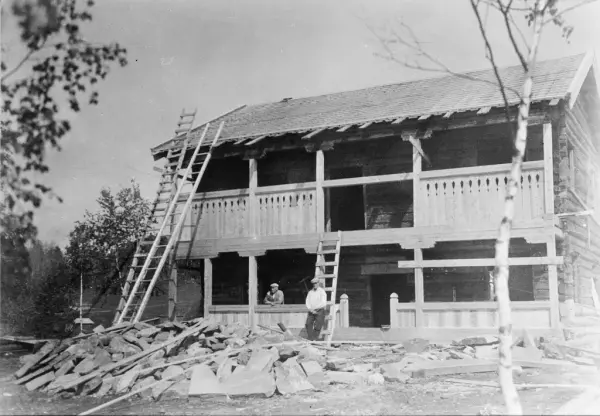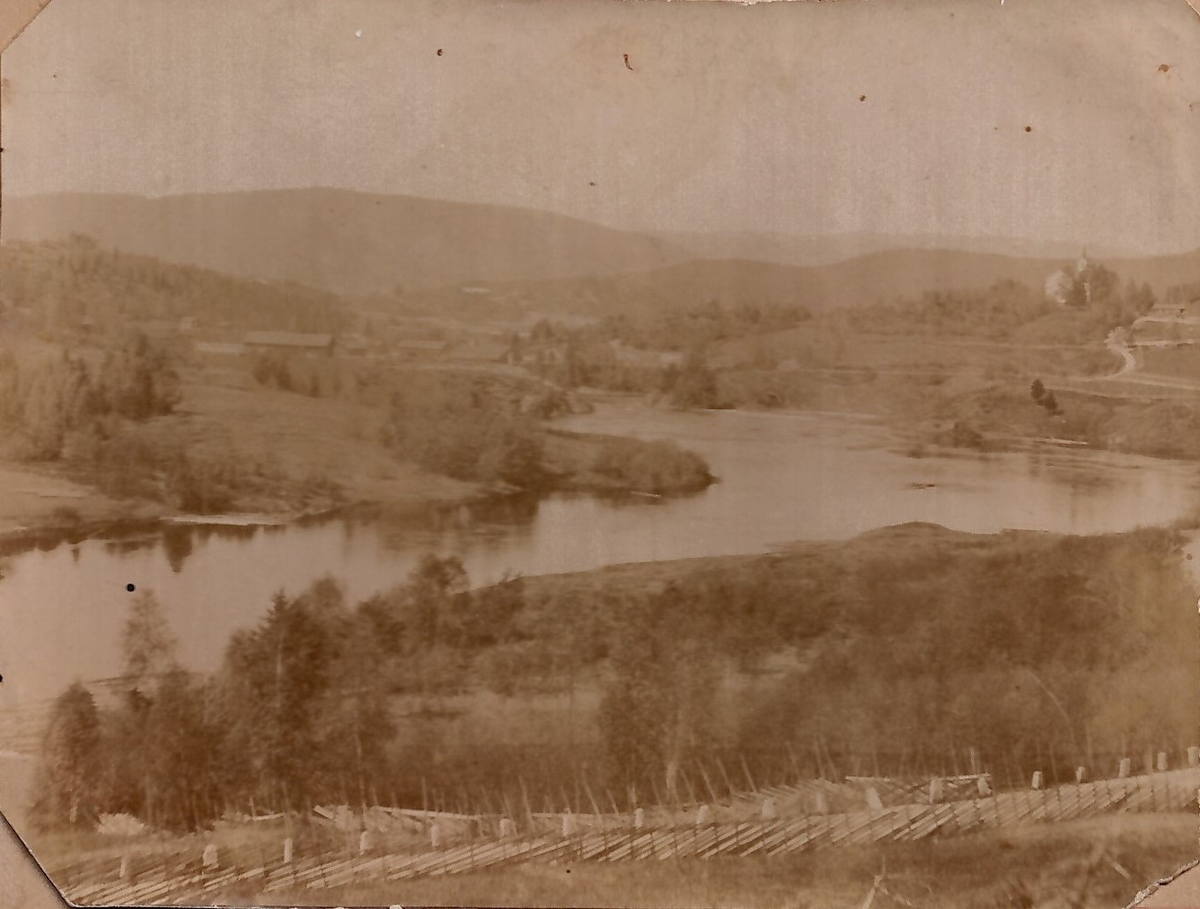-
Eikjebygningen under construction on the museum grounds (1940s)
History
Sigdal Museum belongs to the early museums in the county. In the 1920s, Fylkeslaget – an association of the youth teams in the district – began to work on concrete plans for a museum for Sigdal and Eggedal. Matters really accelerated in 1934, when Torstein and Gina Eken donated the large Eikje building for museum purposes.
The house was built at the end of the 18th century as a residence for “lensmann” Knut Larsen Eikje (police officer) and is a rare building of its kind in the district.
It had already been protected in 1923, but the Ministry of the Church gave permission for the move. Stick by stick, the huge, old building was rolled down. It took 142 cart loads to move everything to «verkenstomta» in Prestfoss. There the house was rebuilt - in 1945, just after the second world war, the Sigdal Museum was finally able to have its official opening, then under the name Sigdal og Eggedal Bygdemuseum.
Even before there were any buildings on the museum grounds, objects had begun to arrive for the collection in the form of gifts and purchases. Ole O. Bakken (1903–1976) served as the museum's first manager, and consulted with Drammens Museum on how the collection should be catalogued. His thick, handwritten journals are in daily use at the museum to this day. In 1942, he wrote in the first object with an ornate pen. It was the four-poster bed from the Eikje building, which is still standing in the hall on the second floor. It has probably stood there since the end of the 17th century.
-
View over Prestfoss, with the buildings at Sigdal Nickel Works (1874-79) visible on the isle to the left. Image from digitaltmuseum.org
Sigdal Nickel Works
Where today's Sigdal Museum is located, there was a nickel factory in the years 1974-79. Nickel-bearing magnetic pyrite was taken out of mines in Grågalten, and this was driven down to a smelter at the nickel plant where it was re-smelted. Nickel prices were very good at this time, so this was a profitable business. Workers' housing was built at the mine field and a road was built from there down to Prestfoss.
From the nickel plant, a dam was built over the river and motive power was taken from the river. The finished metal was driven by horses to the railway station at Krøderen and sent by train from there. In 1877, however, large nickel deposits were discovered in New Caledonia and Canada, and this led to a sharp drop in prices. In a short time, the price fell by half, and it became difficult for Sigdal Nickel Works to compete. The operation was discontinued from 1879.
-
NYG reklame
Sigdal Museum today
Sigdal Museum is a cultural history museum for the municipalities of Sigdal, Modum and Krødsherad. Today, the museum is organized together with Eggedal Mølle (Tveitensamlingene), and forms one department under Stiftelsen Buskerudmuseet. The museum manages a collection that includes two exhibition sites, 23 antiquarian buildings and over 13,000 objects, in addition to photographs and archives. The administration is located in Prestfoss in Sigdal municipality.
At the pleasant open-air museum in Prestfoss, the public can experience historic buildings from the district, which range in age from the 15th to the 18th century. The center of the facility is the stately farmhouse from Eikje. Today, the open-air museum houses 13 historic buildings, laid out as a pre-industrial farmyard from Sigdal with a forge, brewer's house, a house for summer mountain pasture and operational buildings.
The museum has changing exhibitions in the summer season, and activities all year round.
Welcome for a visit!


